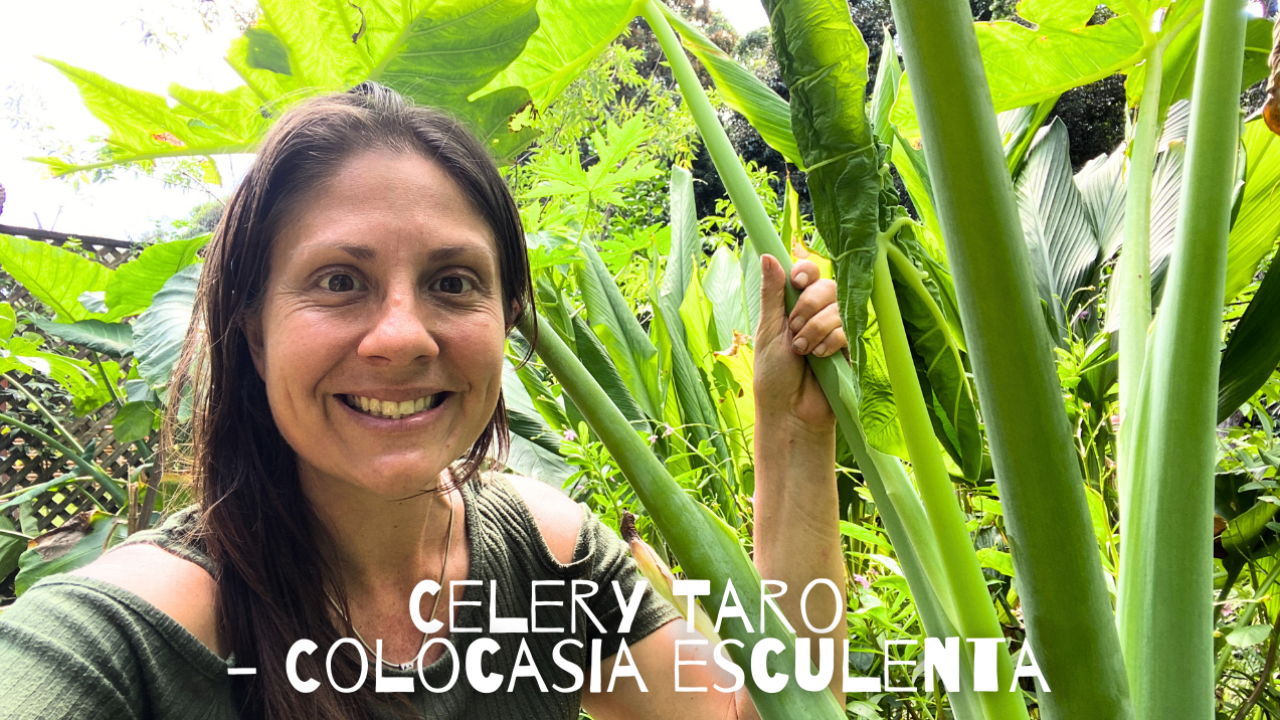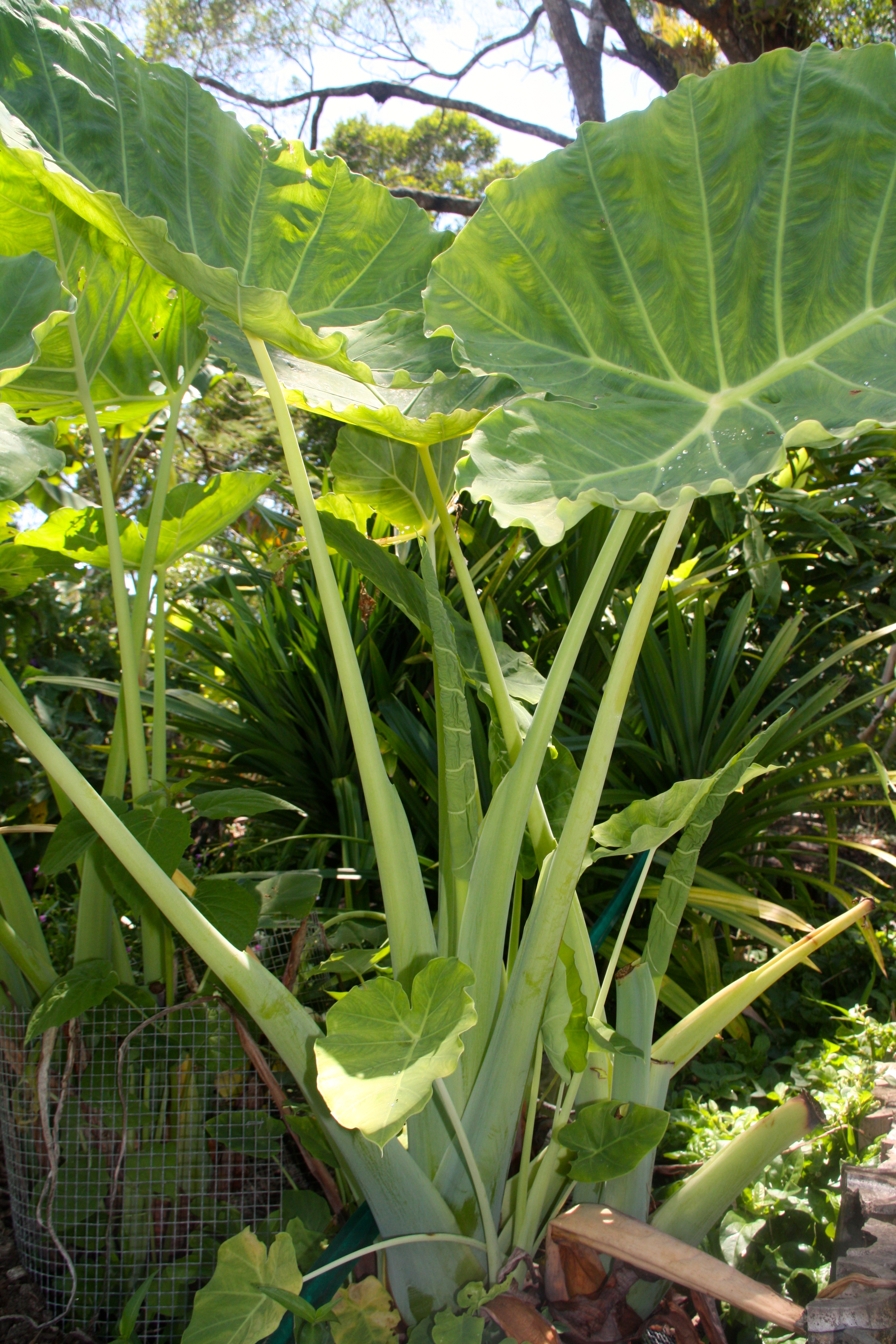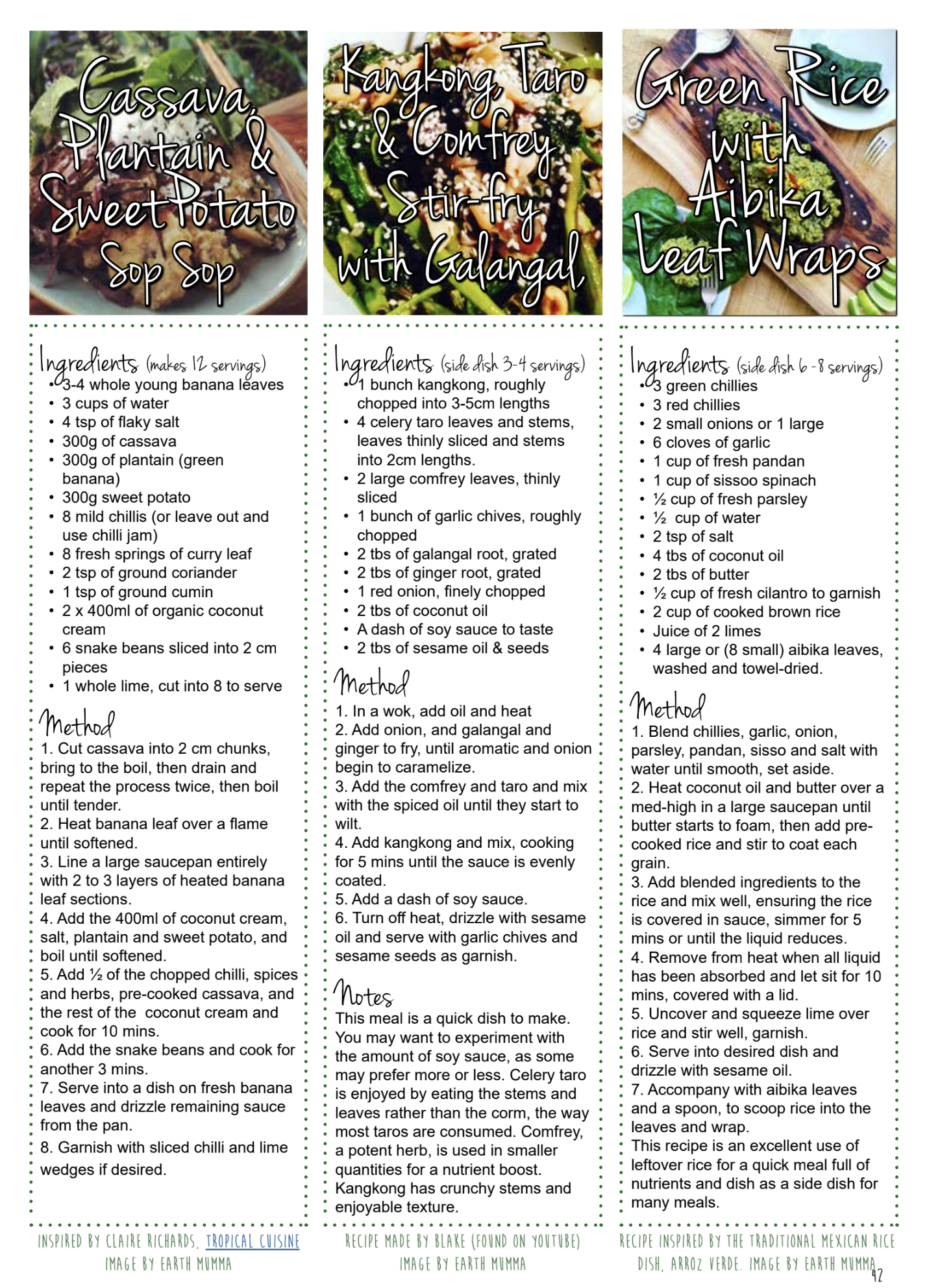Celery Taro - Colocasia esculenta
May 05, 2023
Keynotes: Plant in herbaceous layer, protects soil, eat leaves, stems and corms cooked.
In the realm of tropical edible gardening, I frequently swap out conventional vegetables – the kind that people usually grab from supermarket shelves – with more sustainable alternatives for my culinary ventures. Here's where the intriguing "Celery Taro" comes into play, as the name itself tells a tale of adaptation. This substitute steps in when the scorching summer months pose challenges for growing traditional annual celery, offering a reliable replacement.
Get acquainted with the nutritious and delicious edible plants that almost grow themselves so you can create food security in your home garden. This blog provides the keynotes for use, my anecdotal experience, placement in my permaculture system, plus all the facts to identify, grow and eat this plant!
In saying that, we can grow celery really well during winter and spring, and sometimes if the wet season is not so wet (haha), our celery will make it through a bi-annual and live another season, so I may not need to replant the following year. What I love about home gardens is that we can harvest the outer leaves or stems of many annual plants, and they will continue to grow, unlike shop-purchased celery, where the whole bunch is harvested and will need to be replanted again.
Back to celery taro, well, this one loves the wet. It quadruples in size, and whilst we can't eat it raw or juice it in smoothies as you could annual celery, it is perfect in soups or stir-fries with some cooking. Best of all, it soaks up the flavour of the soup, so we love to base ours on coconut, turmeric, ginger and lemongrass. Basically, think Asian, and it will taste great.
This variety and the Cocoyam are listed with 30 other incredible edible plants (see my blog with the list); a few plants are enough to supply our family.
In my experience, they spread easily. I have a garden bed on contour which is a mini-swale on the gentle slope of my zone 1 veggie garden. During late autumn, winter and early spring, it is planted with annuals, as my bean trellis area with capsicums and eggplants. Once the rains come, there is a lot of water that naturally leads to this spot, and that's when the dormant celery taro grows wild. Yes, I pull it out once a year when I replant my annuals. However, the smallest corm piece will grow a whole new plant, which is why it can take over a garden bed if left to do so. Personally, I pull up the little taro plants and re-pot in my nursery and sell them at the local markets, so in a way, it is a propagation bed whilst my annuals grow. Turning the problem into the solution. The lesson is: be careful where you plant it as it is difficult to remove it forever, a bit like mint in the tropics!
Common Names: Tahitian spinach, Taro, Cocoyam, Celery stem taro.
Origin: Indo-Malaysia and the Pacific.
Description:: Widely grown throughout the tropics. This particular taro was developed for its yield of edible leaves and stems, not the corms. Taro is propagated vegetatively by the leaf-bearing tops of mature corms or by small side shoots or suckers. Tahitian spinach is prone to producing heaps of small bulbils that, if disturbed, can spread rapidly. It tends to be hard to clear out of an area because of the sheer number of these small bulbils. So it is best planted in an area where it can be left undisturbed and harvested often.
Growing Details: Plant any time that the soil is warm and rain is expected. Place the tuber a few cm below the soil surface, spacing: 60-90cm apart.
Soil: Deep, well-drained, friable loams. Under paddy, they are grown in all soil types.
Sun: Partial shade.
Water: Adapted to flooded environments like rice, it can be grown in paddy culture. It also grows in dry,
upland areas if the water is provided by irrigation or rainfall. Mulching helps.
EAT: Leaves and leaf stems are eaten as cooked, and the stems are widely used as a celery substitute in tropical areas by boiling or stir-frying. Taro should never be eaten raw; cook the calcium oxalate out first. They provide protein, calcium, phosphorus, iron, potassium and vitamins A, B, and C. The leaves can be harvested all year round, a favourite for wrapping other ingredients and steaming. The best time to consume is in summer and autumn.
 The recipe accompanying this plant featured in my Incredible Edibles Tropical Superfoods Guide is 'Kangkong, Taro and Comfrey Stir-fry with Galangal'; see the image below. Grab my book here or join my mailing list to stay tuned for future blogs with these 'garden to plate' recipes.
The recipe accompanying this plant featured in my Incredible Edibles Tropical Superfoods Guide is 'Kangkong, Taro and Comfrey Stir-fry with Galangal'; see the image below. Grab my book here or join my mailing list to stay tuned for future blogs with these 'garden to plate' recipes.
If you already have my book, you might like to expand your garden species with Blake Hudson's book: Tropical Food Plants, which is an extensive resource that explores the incredible diversity of more than 121 edible tropical plants that can be grown in tropical and sub-tropical regions around the world. He has carefully selected the most appropriate for tropical regions, such as Australia, Florida and the Asia Pacific. Learn more about it here: Tropical Food Plants - A Field Guide to Tropical Edible Plants, by the EarthEartisan.
Tropical gardening can be easy if you know what you are doing. It is true to say that it is a whole different experience to temperate climates in which much of the information out there teaches. My blog: Tropical Planting Guide - A List of Plants Annual Vegetable Gardening, offers some insight into the best growing times with respect to our wet and dry seasons and, better yet, a free download to print and use to plan your abundant veggie patch. I have also provided some gardening tips that will help you on your garden-to-plate journey, such as planting by the moon, staggering harvests and seed suppliers!
If it is the practical hands-on and permaculture design skills you want to gain, then come along to learn with like-minded folk in our garden (mine and Blake's) or other wonderful demonstration sites in our FNQ region. You can learn more about my offerings here: https://www.earthmumma.co/workshops-courses.
Yes, we have plants available in our home nursery. Please contact me if you would like to order some to get your garden growing!
If this information was helpful, learn about more of the plants we love to grow and eat here: The Incredible Edibles Superfood Plant List!









